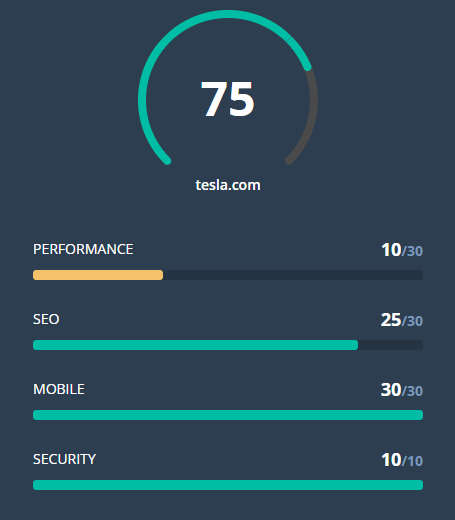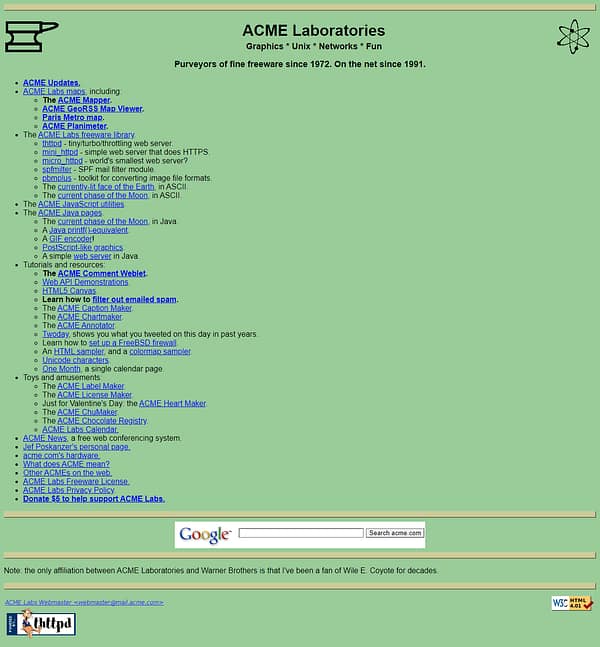Website grading tools have come a long way over recent years. The days of just measuring ‘page speed’ are long gone; modern tools now provide sophisticated reports showing measurements for every aspect of your page content, along with useful suggestions for improvement.
The other thing they give you is a nice big score or grade, usually colour-coded red, yellow or (hopefully) green.
While it’s great to be able to summarise so much detail in such a simple way, it’s important to remember that getting a high score is not the ultimate goal with your website; it’s just a tool in your toolkit.
Scoring goals
As a website owner, your site’s goals are what you decide they are. Maybe you want to drive enquiries for your sales team, or maybe you want the website to convert the customers itself. Sometimes you are just trying to tell your story, or stand out from your competitors when potential clients are researching their options.
Whatever your goals are, the way to achieve them is with an effective website for that purpose. ‘Effective’ in one case might mean a lot of high-res images or video, with a bunch of tracking scripts to understand exactly how your users are interacting with the site.
In another case, an effective site might have just one purpose and no need to sell itself – maybe it’s a transactional site accepting registrations for an event, or providing some official documentation for a product.
These sites are going to look and perform in very different ways, which is why you can’t just stick them all into the same grading tool to figure out how ‘good’ they are.
The need for speed
We’ve all heard a million times how important it is for websites to be fast. Slow websites have a higher bounce rate and convert fewer customers, while snappy, quick-loading sites feel good and are reassuring to prospective customers or clients.
However speed is never the only consideration. For the obligatory car analogy, a Formula 1 racing car is not going to be ideal for the school run, but it will do a quarter mile a little quicker than a Toyota Estima. On school mornings, the quarter mile time is not the thing you care about.
Back online, the fastest possible website would have very little text content, no images or video, default browser fonts, no JavaScript or any other external assets. It would be like the internet in the 1990s.
These days we expect websites to do a lot more, and we’re mostly happy to make some speed trade-offs in return. We want analytics to measure traffic and visitor behaviour. We want nice big photos and video and cool styling, and we want to be able to log in and change the content without needing a developer to do it.
The key point to remember is that every plugin, little add-on or piece of content does have a certain weight and cost to your site’s performance, so you should aim to keep it as lean as is appropriate for your target market.
You can use some technical tricks like lazy loading to avoid loading a large page all at once, which might improve your website grade, even though the page is ultimately still the same size when fully loaded.
Beware of third-party scripts and embeds too. Videos and forms embedded from most of the usual platforms will come with tracking scripts, stylesheets and all sorts of other things, which all count towards your site’s load time.
So what are website grades good for?
Website grades and scores can be a useful tool if you keep them in perspective.

With 10/30 for performance, is tesla.com doomed or will they be OK?
By all means, if you have a low score in a particular area, you or your developer should look into why, and whether it can be addressed. The specific recommendations which come along with the grades are always worth reviewing.
Tracking your scores over time can be useful too, to help pick up new issues or things like a gradual slowdown as your website’s database grows.
The scores can also give you quite holistic insights into your entire website and hosting setup, from the perspective of an end user.
If you shift a website from one web host to another, you’ll almost certainly see a change – hopefully for the better – in your metrics. Put a service like Cloudflare in front of your site and you might see quite a drastic performance improvement.
These changes will all be subjective unless you have some sort of ongoing measurements to compare with.
In conclusion
Website graders can be really useful tools, but don’t be entirely focused on the number or the grade. Instead, aim to get that number as good as possible for your site the way you want it.
Mogul has been helping clients measure and improve their site performance since way back, so if you’d like some help in this area, please get in touch.
